Last Updated on February 7, 2025
The Chinese market is rapidly evolving. Not only is its digital ecosystem continuously innovating and expanding, but the way Chinese consumers engage with brands is also changing.
The increased exposure of these local audiences to new technologies has made it more crucial for foreign businesses to adapt their digital marketing strategies to the changing trends. If not, chances are you’ll get overshadowed by both domestic and global players entering China’s thriving business scene.
Read along as we discuss some of the new digital marketing trends in China and insights on how to leverage these changes to your brand’s advantage in the long run.
Latest Outlook of China’s Digital Marketing Landscape
Social media and e-commerce platforms still play a huge part in the lives of Chinese internet users. In fact, according to a survey, one in five Chinese consumers consider these online channels as primary sources of brand and product information.
Considering the increasing competition within the Chinese market, it’s no surprise that more than 50% of businesses operating in China are eager to increase their digital marketing activities.
With the focus on sales growth, conversion, and brand familiarity, many marketers are opting to tackle channel-centric marketing strategies. This approach stems from the fragmented consumer behavior and preference of digital shoppers in Mainland China.

The Accenture 2024 China Market CMO Research report specifically highlighted the continued reliance of foreign and local marketers on precision marketing strategies to generate more sales and conversions. At the same time, they’re also eager to cover as many social media platforms as they can to maximize brand exposure and familiarity.
Influencers also remain effective when conducting digital marketing in China. Despite the shift from Key Opinion Leaders (KOLs) to Key Opinion Consumers (KOCs) in the past few years, influencer marketing still holds significant sway over the general public’s purchasing decisions.
In fact, 86% of survey respondents in the past two years have confirmed that they purchased at least one product from the influencers they follow.
8 New Trends For Your Digital Marketing Strategies in China
1. Value-driven Chinese Audiences
As China’s digital ecosystem expands, the general consumer journey also becomes more complex than before. Chinese consumers are increasingly glued to their mobile devices, making them more exposed to endless shopping options and alternatives.
Rather than conventional marketing strategies, consumer trends in the Chinese market tend to lean more positively toward user-generated content. In fact, 64% of local respondents on Accenture’s 2024 consumer report feel overwhelmed by too many online advertising campaigns.
In hindsight, the rapid development of Chinese e-commerce and social media platforms has eventually led to consumers feeling less confident with their purchasing decisions. Rather than luxuries, modern shoppers are now looking at the impact of their purchases on their everyday lives.

Source: China Daily
Although Chinese consumers still expect local and foreign brands to provide a wide variety of options, marketers must find a way to prevent decision fatigue among their target audience. They must simplify the customer journey without limiting their digital presence in China’s saturated consumer market.
To align with China’s digital marketing trends, it’s important to determine which categories lack consumer confidence. In the latest reports, Chinese customers maintain a positive outlook on segments like snacks, consumer electronics, cosmetics, personal care, household items, and clothes.
The categories that may need more creative push in digital marketing strategies are luxury goods, accommodation bookings, leisure destinations, and automotive. As you may already notice, these segments often have heftier price tags.
2. Effectiveness of Conversational Marketing
When talking about social media marketing in China, marketers often mention the importance of producing engaging content marketing strategies to increase brand awareness. However, the reality is initial interest often doesn’t translate to online sales and conversions.
Because of this, it’s important to establish consistent customer engagement. Brands that ignore comments are missing a goldmine of real-time, unfiltered consumer feedback. Forget traditional focus groups. Your best insights to create effective digital marketing strategies are happening live, right under your latest post.
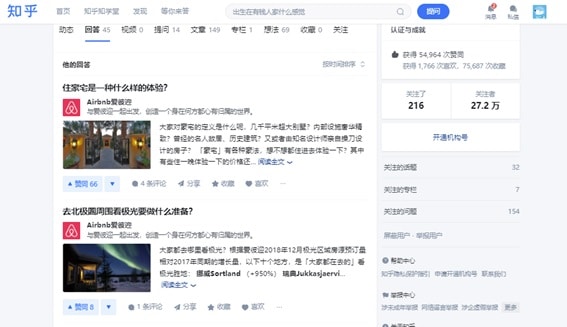
Airbnb answering questions and topics on Zhihu
Young Chinese consumers expect brands to engage with them directly, especially on content-centric channels like Zhihu and Douban. On social media platforms like Xiaohongshu, WeChat, and Douyin, comment sections can function as dynamic, public customer service hubs.
When a user asks a question about a product or voices a concern, an immediate response isn’t just appreciated, it’s expected.
International brands can take this even further, using comments as a data-driven marketing campaign. If a lipstick shade gets repeated requests for a matte finish, or a sneaker design is being praised for its comfort but criticized for limited color options, that’s actionable insight. Responding to these demands in real time builds loyalty and demonstrates a brand’s agility.
3. Personalized Marketing through AI
With the continued development of top Chinese social media platforms, it’s not a surprise that local consumers are already accustomed to AI assistants, from smart home devices to self-learning e-commerce algorithms.
In a market where 79% of Chinese consumers are open to AI-generated recommendations (significantly higher than the global average), many brands that embrace AI-driven engagement will hold a competitive edge in the Chinese market.
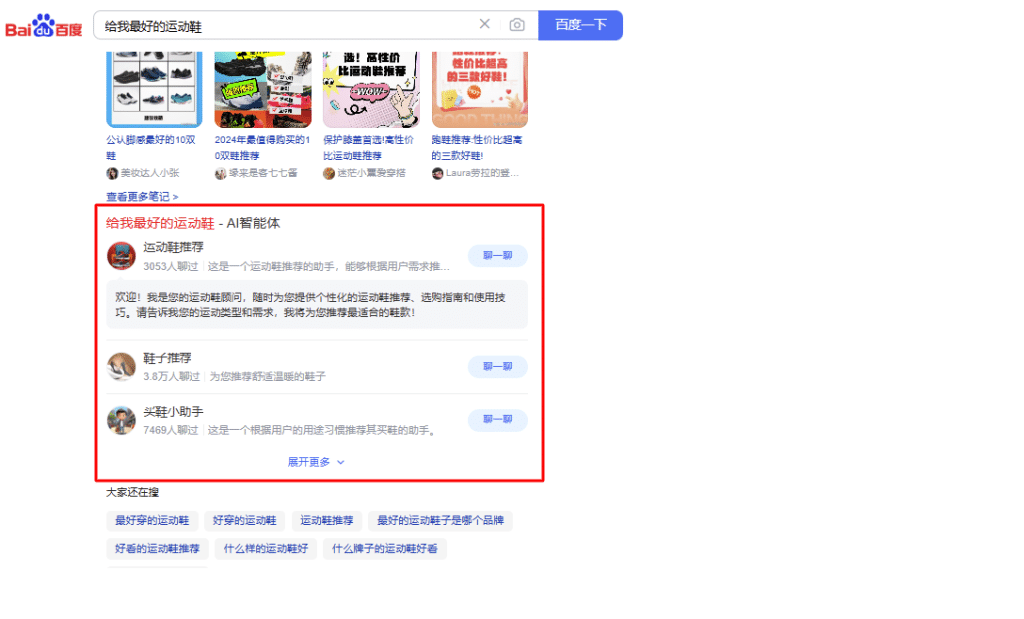
Baidu AI Agent
Like its global counterpart, the Chinese search engine market is also increasingly utilizing AI generative technology to cater to the needs of Chinese customers. While it’s true that not all search engines have this feature, it’s worth noting that Baidu has been utilizing this function for quite a while now.
China’s most popular search engine integrates these AI assistants on queries that require personalized recommendations (as seen in the above screenshot). With AI generative technology integrated into the organic search results, the way consumers find products and services is evolving.
The changes in how local search engines generate answers to queries also meant that marketers must be ready to reshape and adjust their Baidu SEO strategy at any given moment. They must place an even greater emphasis on creating contextual, conversational, and AI-optimized content.
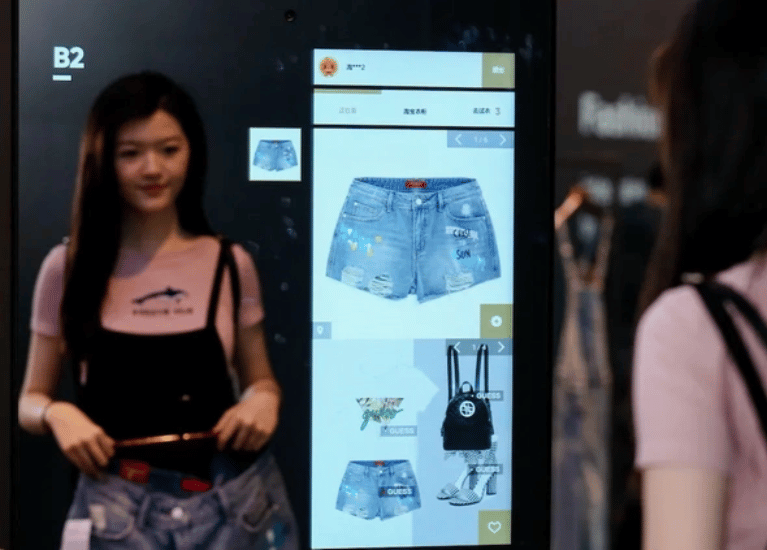
AI-enabled virtual fitting rooms on Taobao (Source: Jing Daily)
AI technology’s influence on Chinese digital marketing trends is also evident in popular e-commerce platforms like Taobao and JD.com.
Beyond offering personalized product recommendations that streamline the shopping experience, these online marketplaces also integrated AI-powered features like virtual fitting rooms. Integrating this level of customization into your digital marketing strategies not only enhances user satisfaction but also drives higher conversion rates.
4. The Rise of Experience Commerce
From social media platforms transforming into full-blown e-commerce channels, platforms are now expanding beyond user engagement and online selling.
To introduce immersive and interactive experiences to the Chinese consumer market, these super apps integrate entertainment, community, and commerce into a single ecosystem.
E-commerce stores no longer solely offer product listings, consumers visiting these channels can also try on clothes through augmented reality (AR), participate in a live-streamed product launch, or customize their purchases.
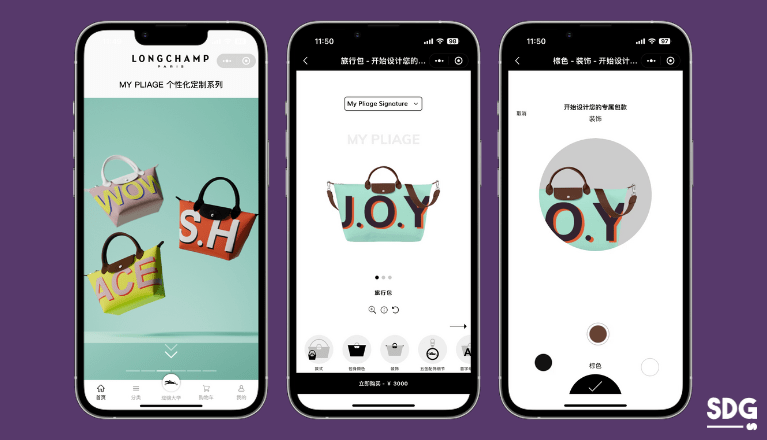
LongChamp’s WeChat Mini-Program
Longchamp’s WeChat mini-program, which allows shoppers to customize bags, is a prime example of leveraging personalization. Today’s young consumers desire uniqueness in their purchases, seeking to stand out rather than blend in.
We’re also seeing a renewed interest in gamified commerce, where brands introduce limited-time challenges, quizzes, and reward-based shopping to keep users engaged. The goal? Turn shopping into an experience people don’t just participate in but actively share and relive.
5. Creative Crossovers and Co-branding Partnerships
Co-branding campaigns are among China’s most innovative digital marketing strategies. One standout example is the recent partnership between Luckin Coffee and the classic cartoon duo, Tom and Jerry.
These marketing campaigns are launched last November 2024, with its official Weibo hashtag garnering 269,000 discussions and 24 million views. By aligning with a beloved franchise that sparks nostalgia across generations, Luckin Coffee positioned itself as a hot topic in local social media channels.

Source: Jing Daily
This co-branding effort wasn’t limited to clever online advertising strategies alone. Thanks to the visual-centric coffee cups, plush blankets, and other customized products, fans became more eager to share photos and reviews online.
Through this collaboration and utilizing the power of social media platforms, Luckin Coffee demonstrates how tapping into culturally significant icons can spark both consumer curiosity and repeat purchases.
For digital marketers eyeing the Chinese market, the lesson is clear: smart collaborations with familiar brands can create viral moments, encourage social sharing, and sustain a strong momentum for long-term customer engagement.
6. Continued Popularity of Private Domain Channels
Influencer marketing has long been effective in drawing the interest of Chinese consumers. However, single-handedly using this digital strategy is no longer sufficient to sustain the shortened attention span of online shoppers.
This is where private traffic channels, such as WeChat groups, brand mini-programs, and exclusive membership platforms, emerge as game-changers. Instead of relying solely on influencers to drive one-time sales, brands are now building dedicated communities that foster long-term engagement and customer loyalty.

Younger generations, especially Gen Z, are no longer just passive buyers. They seek personalized recommendations, VIP treatment, and a sense of belonging. Private domain marketing allows brands to cultivate these relationships through exclusive content, early access to product drops, and tailored loyalty programs.
Take WeChat as an example: rather than relying on the platform for mass advertising, brands create closed-loop ecosystems where customers can join invite-only groups, receive one-on-one service, and interact directly with brand representatives.
This approach shifts the focus from broad public outreach to high-value, private interactions that build deeper trust and brand advocacy.
7. Cross-Channel Digital Marketing Campaigns
As previously mentioned, the Chinese digital ecosystem is a highly segmented consumer landscape. With both foreign and local brands maximizing their social media accounts to reach as much audience as they can, it’s only natural for them to consider expanding their digital presence on different platforms.
To stay relevant, businesses must adopt a cross-channel approach, integrating content, branding, and engagement across multiple consumer touchpoints.
A successful cross-channel campaign can utilize different digital marketing trends in China, from creating short videos and live streams to launching an official Chinese website and private domain WeChat group.
So, whether a consumer encounters a brand on Douyin, Xiaohongshu, or a WeChat mini-program, the experience should feel unified and tailored to their interests.
8. Alignment with Cultural Moments and Festivities
Your approach to digital marketing in China must be localized and focused on highlighting the Chinese culture. Chinese consumers don’t just expect brands to acknowledge major holidays and festivities like Chinese New Year or Singles’ Day. They expect meaningful participation.
A generic red-and-gold social media marketing campaign during the Lunar New Year won’t cut it. Instead, brands that craft narratives rooted in tradition, family values, and regional nuances create stronger emotional connections.
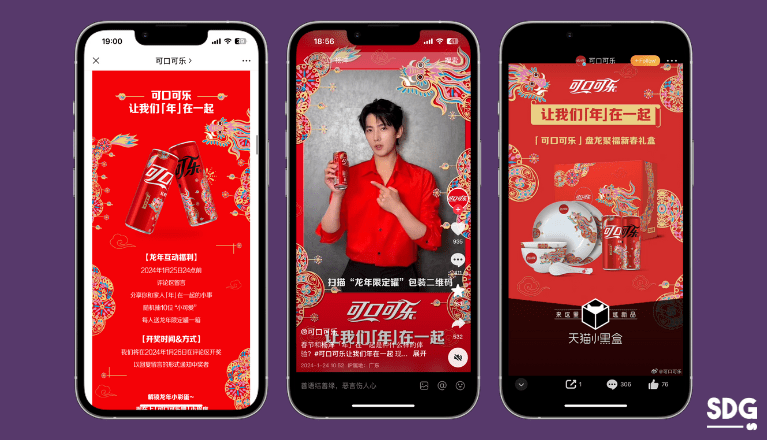
Beyond the national holidays, tapping into micro-festivals, shopping seasons, and even pop culture trends can create a strong brand presence.
For instance, the Qixi Festival (China’s Valentine’s Day) and 520 Day are prime opportunities for businesses catering to couples and younger consumers. Likewise, participating in events like the Gaokao (college entrance exam) season with campaigns that support students can help international schools and universities appeal to China’s education market.
Which Digital Marketing Platforms Should You Use in China This 2025?
As you get familiar with China’s digital marketing trends, it’s also important to identify which platforms will work best for your campaign and lead you to your target audience.
These channels carry different user base demographics and features that may appeal to various brands depending on the industry they belong to. Here are some of your options:
● Social Media Platforms
- Little Red Book (Xiaohongshu)
This platform combines social media and e-commerce. It initially focuses on lifestyle content but has since expanded its features to accommodate other categories.
It’s particularly effective for marketers looking to build a community around their brands, as it offers a space for user-generated content and reviews.
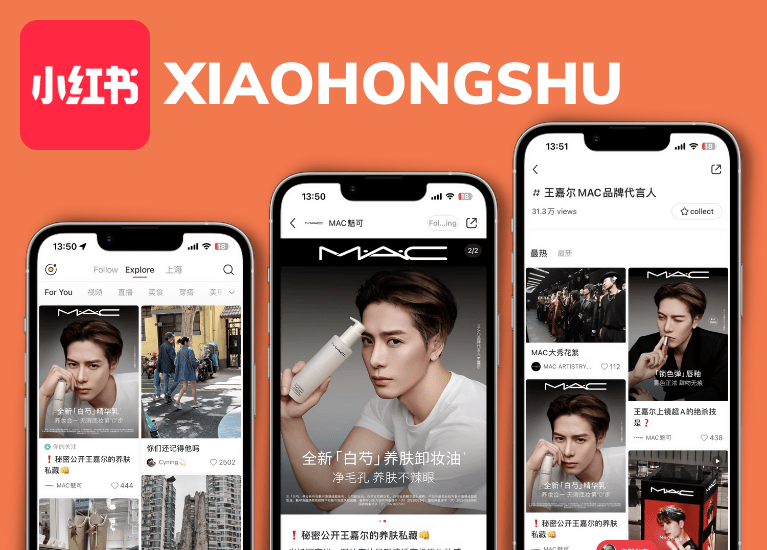
Integral to any digital strategy in China, WeChat functions beyond a messaging app; it’s a comprehensive ecosystem supporting content marketing, customer service, and transactions. Establishing an official account on this platform is crucial for brand engagement.
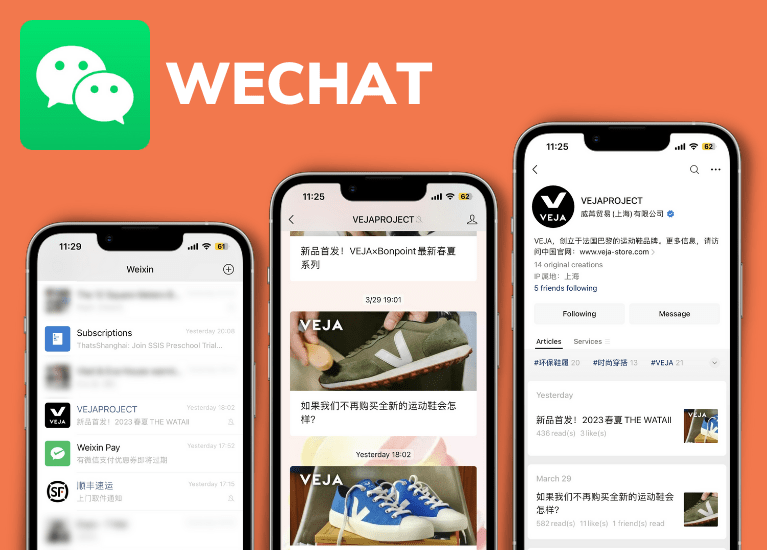
- Douyin
As the premier platform for short-form video content, Douyin caters to a youthful audience and is critical for viral marketing campaigns. Its engaging format and sophisticated algorithm provide unparalleled visibility in China’s digital ecosystem.
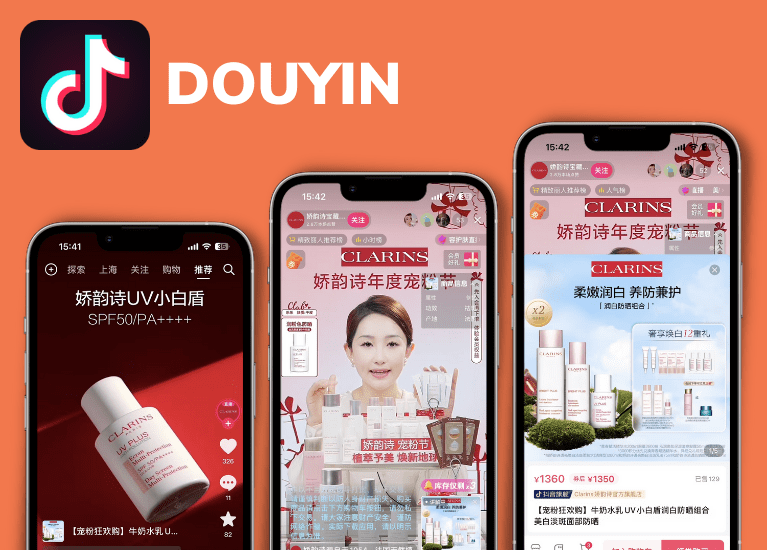
● E-commerce Platforms
- Tmall & JD.com
These are the top online retail platforms essential for brands selling physical products. Tmall excels in consumer goods, while JD.com is preferred for electronics and quality items. Success here demands a comprehensive approach to storefront management and digital marketing.

- Pinduoduo
With a unique group-purchase mechanism, Pinduoduo reaches cost-conscious customers. This platform offers an entry point to the country’s vast, yet less urbanized, markets.
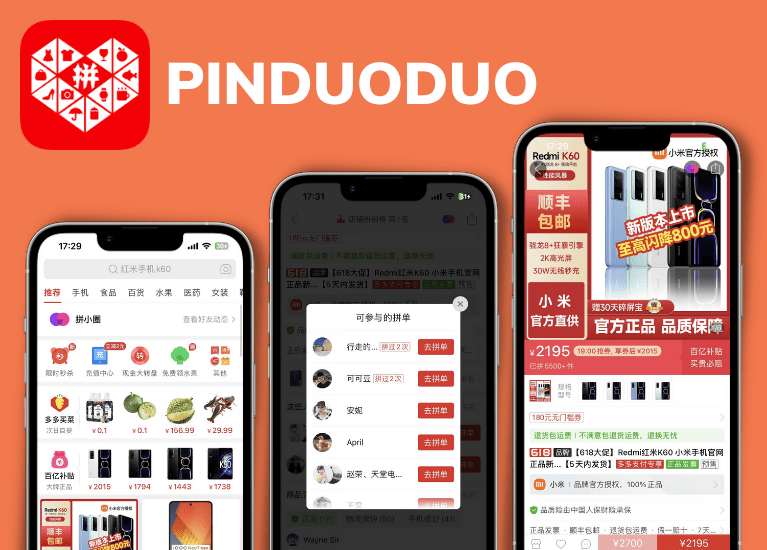
How To Enter The Chinese Market Through Digital Marketing
The process might seem smoother for well-established brands due to the favorable perception of reputable foreign brands among local shoppers. However, smaller or medium-sized businesses should note that their existing reputation may not carry the same weight in China.
The Chinese consumer market has become increasingly discerning, having experienced disappointments with foreign brands that either misrepresented their origins or delivered subpar products.
The era where imported products are sold simply based on perceived international quality is fading. Because of this, every brand, regardless of its size or reputation abroad, starts with a clean slate in China.
Understanding the unique facets of the country’s virtual landscape is your first step. It involves recognizing the changing needs of local consumers and tailoring your strategies based on the latest marketing trends in China.
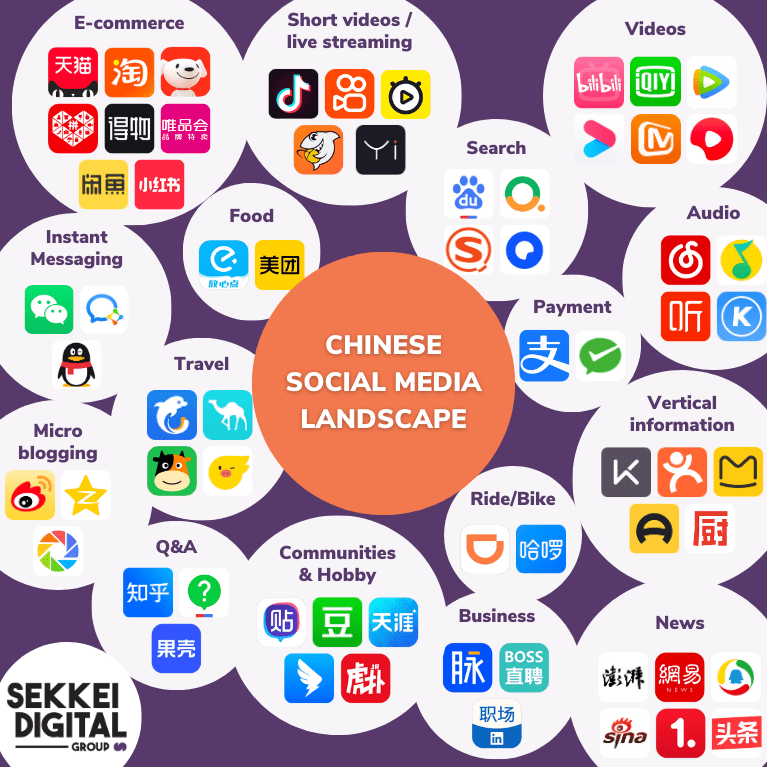
Quick Q&A
Why is digital marketing important in China?
Digital marketing is important in China because of the country’s vast and highly digitized consumer base, which relies heavily on online platforms for shopping, socializing, and entertainment.
Should You Launch a Website for Chinese Consumers?
Having a website tailored for the Chinese market is crucial. It means setting up a site hosted on local servers, securing a .cn domain, and, if you plan to sell online, obtaining an ICP license. These steps ensure visibility on Baidu, which dominates over 70% of the search engine market in the country.
Additionally, a local website is often a prerequisite for launching advertising accounts on various social media platforms in China.
Your Trusted Digital Marketing Partner in the Chinese Market!
In a market as fast-paced as China, the preferences and needs of your target audiences are also subject to frequent changes. Because of this, it’s safe to say that not all brands require the same digital marketing strategies.
You may also want to read:
At Sekkei Digital Group, we can help you navigate the unpredictability of the Chinese market. With our extensive industry experience, we offer the avenue to unlock your brand’s potential and become a leading entity in your target market.
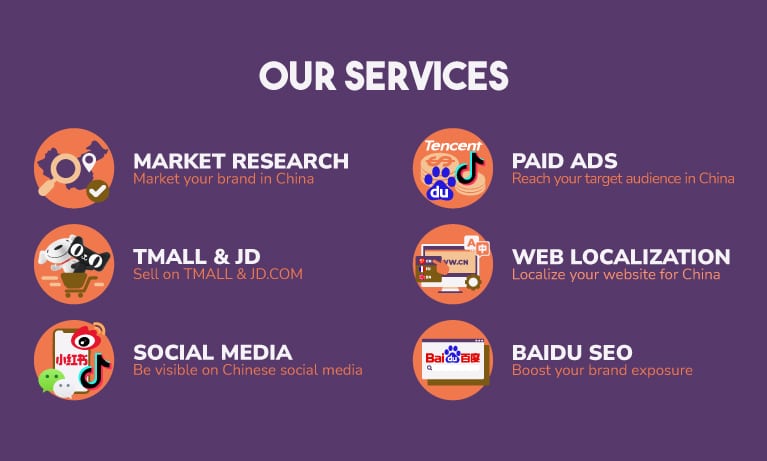
From keeping up with the latest digital trends to integrating the local culture into your promotional campaigns, our team is ready to guide you every step of the way. Contact us today, and let’s start working together!
References:
Accenture 2024 China Market CMO Research
Embracing the Acceleration of the Digital Era: Emerging Market Trends in China
Marketing Trends in China: From Dragon’s Year to the Year of Snake



